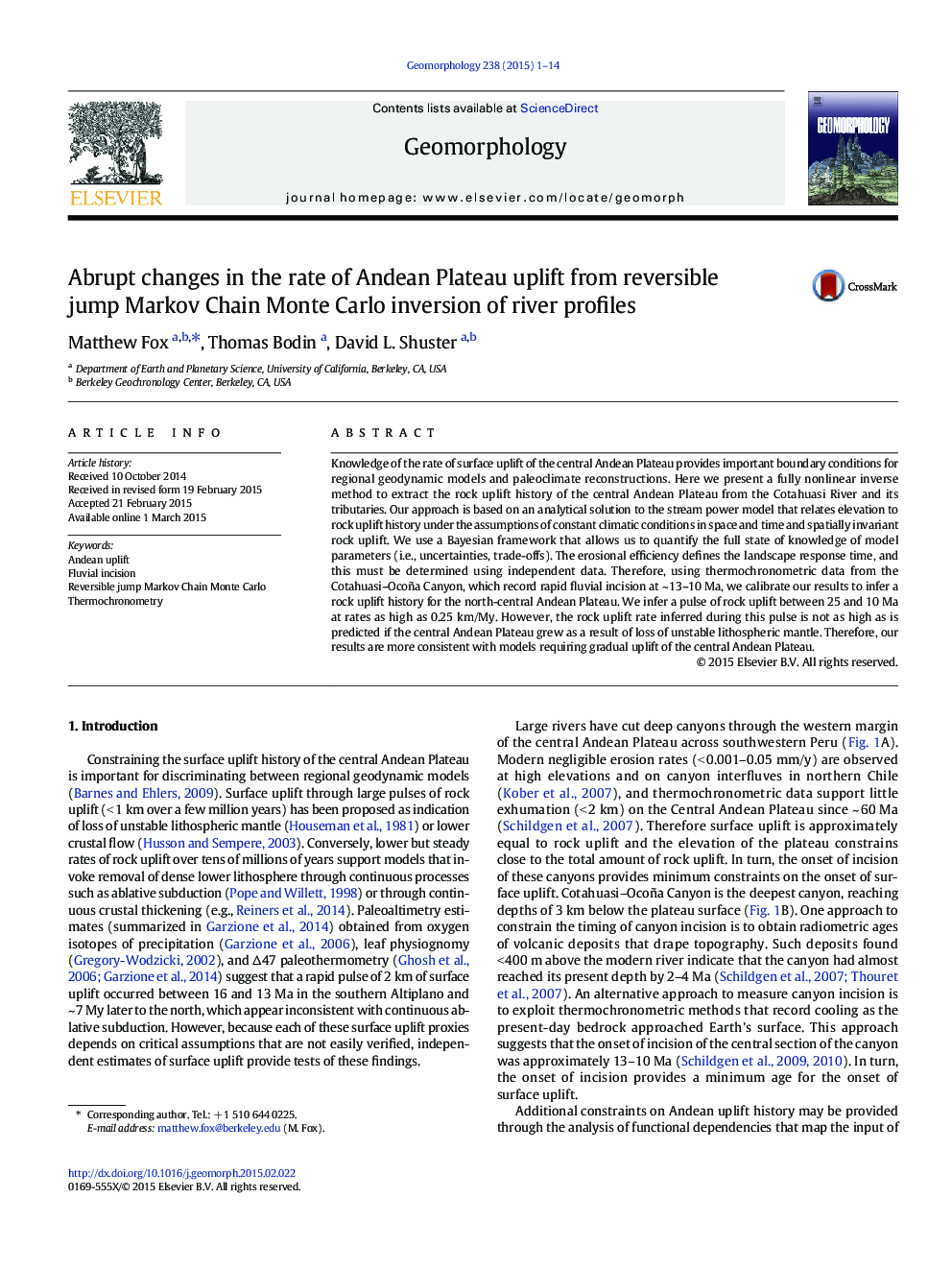| Article ID | Journal | Published Year | Pages | File Type |
|---|---|---|---|---|
| 4684295 | Geomorphology | 2015 | 14 Pages |
•We present a fully nonlinear inverse method to extract rock uplift rate information from river profiles.•We use a Transdimensional Bayesian framework that allows us to quantify the full state of knowledge of model parameters.•Application of our approach to the Cotahuasi catchment reveals a pulse of rock uplift between 25 and 10 Ma at 0.25 km/Myr
Knowledge of the rate of surface uplift of the central Andean Plateau provides important boundary conditions for regional geodynamic models and paleoclimate reconstructions. Here we present a fully nonlinear inverse method to extract the rock uplift history of the central Andean Plateau from the Cotahuasi River and its tributaries. Our approach is based on an analytical solution to the stream power model that relates elevation to rock uplift history under the assumptions of constant climatic conditions in space and time and spatially invariant rock uplift. We use a Bayesian framework that allows us to quantify the full state of knowledge of model parameters (i.e., uncertainties, trade-offs). The erosional efficiency defines the landscape response time, and this must be determined using independent data. Therefore, using thermochronometric data from the Cotahuasi–Ocoña Canyon, which record rapid fluvial incision at ~ 13–10 Ma, we calibrate our results to infer a rock uplift history for the north-central Andean Plateau. We infer a pulse of rock uplift between 25 and 10 Ma at rates as high as 0.25 km/My. However, the rock uplift rate inferred during this pulse is not as high as is predicted if the central Andean Plateau grew as a result of loss of unstable lithospheric mantle. Therefore, our results are more consistent with models requiring gradual uplift of the central Andean Plateau.
